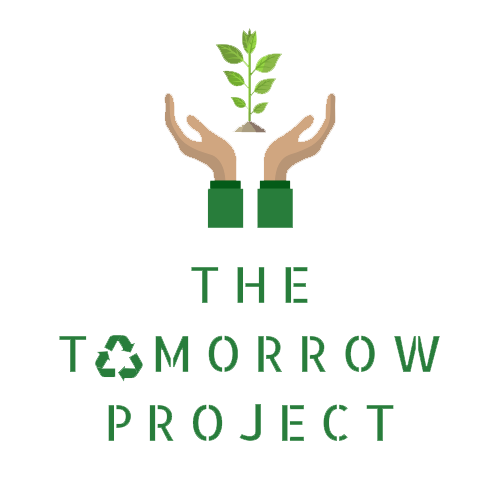The Connection Between Racism and the Environment
BY Sanjana Bajaj: Southwest Regional Outreach Manager AT THE TOMORROW PROJECT
Environmental racism. This is a term that can be surprising or confusing to some. How is the environment racist?
The concept itself is nothing new. It’s part of the environmental justice movement that arose from the Civil Rights Movement of the 1960s. It was this pivotal coalition of racial justice activists that apprised communities of color about the public health dangers within their homes and within their families. How pollution, waste, and the climate crisis continue to disproportionately affect people of color, specifically black and indigenous populations. This is because of the government and various corporations exposing minority and low-income communities to carcinogens and pollutants through oil pipelines, toxic waste dumps, and more. This injustice occurs at a rate higher than that of affluent white neighborhoods.
Various events have brought the environmental justice movement to light this past decade, one of the most notable being the water crisis in Flint, Michigan. If the majority of Flint was white and wealthier, would the government have responded quicker to the protests and complaints regarding the polluted water? Would the calamity have even happened in the first place? But more recently, the COVID-19 pandemic has highlighted the conversation about environmental racism. Data from Chicago health officials in early April 2020 stated that 72% of people that died there of coronavirus were Black, even though Black people only make up one-third of the population. According to the CDC, non-Hispanic Black persons have a hospitalization rate five times that of non-Hispanic white persons. The coronavirus is just the latest example of how racism plays a role in unequal health outcomes. There’s no biological reason for African Americans dying at higher rates from COVID, according to Dr. Anthony Fauci. Some of the racial disparities that cause this include differences in income, occupations, housing, and air quality. A disproportionately high number of ethnic-minority households in North America and Europe live near landfills and incinerators. These toxic hazards produce bad air quality and therefore cause a higher rate of diseases such as asthma and cancer. These are predisposing conditions that lead to more serious cases of the coronavirus.
During these times, it’s crucial to focus COVID relief on communities of color that have been underprivileged during this pandemic. However, this is a short-term solution to a problem that is deeply rooted in our society. There are many, many injustices that Black people and other minorities face, and many of them are being brought to light by the wave of Black Lives Matter protests happening all over the globe. Environmental racism has been happening for decades, and so have various other inequalities. What we need to do is educate ourselves and others, as well as exercise our first amendment right to protest these disparities. Activism, especially youth activism from the leaders of tomorrow, is exceedingly important right now. We need to demand action now so that future generations don’t grow up in a world where their race or ethnicity determines the quality of the air they breathe.
Resources for Further Learning:
There’s Something in the Water: a documentary on environmental racism in Canada
https://www.netflix.com/title/81206890
United Church of Christ’s Study on Hazardous Waste Sites
https://www.ejnet.org/ej/twart.pdf
Dumping in Dixie: A book about environmental justice by Dr. Robert D. Bullard
Environmental Justice Timeline
https://www.epa.gov/environmentaljustice/environmental-justice-timeline
What is Climate Justice? - post by the Tomorrow Project
https://www.instagram.com/p/CBYlceMlWl8/
The United States Environmental Protection Agency (EPA)’s study on air pollution disparities:
https://www.ncbi.nlm.nih.gov/pmc/articles/PMC5844406/
Cancer Alley Now Coronavirus Alley
https://www.sierraclub.org/sierra/cancer-alley-now-coronavirus-alley
What Standing Rock Teaches Us About Environmental Racism and Justice
https://www.healthaffairs.org/do/10.1377/hblog20170417.059659/full/
Donate:
Colin Kaepernick’s Coronavirus Relief Fund for Black and Brown Communities
https://www.knowyourrightscamp.com/covid19
Partnership with Native Americans’ Coronavirus Emergency Response Fund
Flint Water Fund
https://www.unitedwaygenesee.org/civicrm/contribute/transact?reset=1&id=5
WE ACT for Environmental Justice
https://www.weact.org/home/getinvolved/donate/
NAACP
https://secure.actblue.com/donate/naacp-1
Stand with Standing Rock
https://standwithstandingrock.net/donate/
Sources Used in Article:
Coronavirus: Why some racial groups are more vulnerable https://www.bbc.com/future/article/20200420-coronavirus-why-some-racial-groups-are-more-vulnerable
COVID-19 in Racial and Ethnic Minority Groups
https://www.cdc.gov/coronavirus/2019-ncov/need-extra-precautions/racial-ethnic-minorities.html
Fauci says the coronavirus is ‘shining a bright light’ on ‘unacceptable’ health disparities for African Americans
A Question of Environmental Racism in Flint
https://www.nytimes.com/2016/01/22/us/a-question-of-environmental-racism-in-flint.html
Other Opportunities
Donate Towards Coronavirus Relief Through Credit Card Rewards
